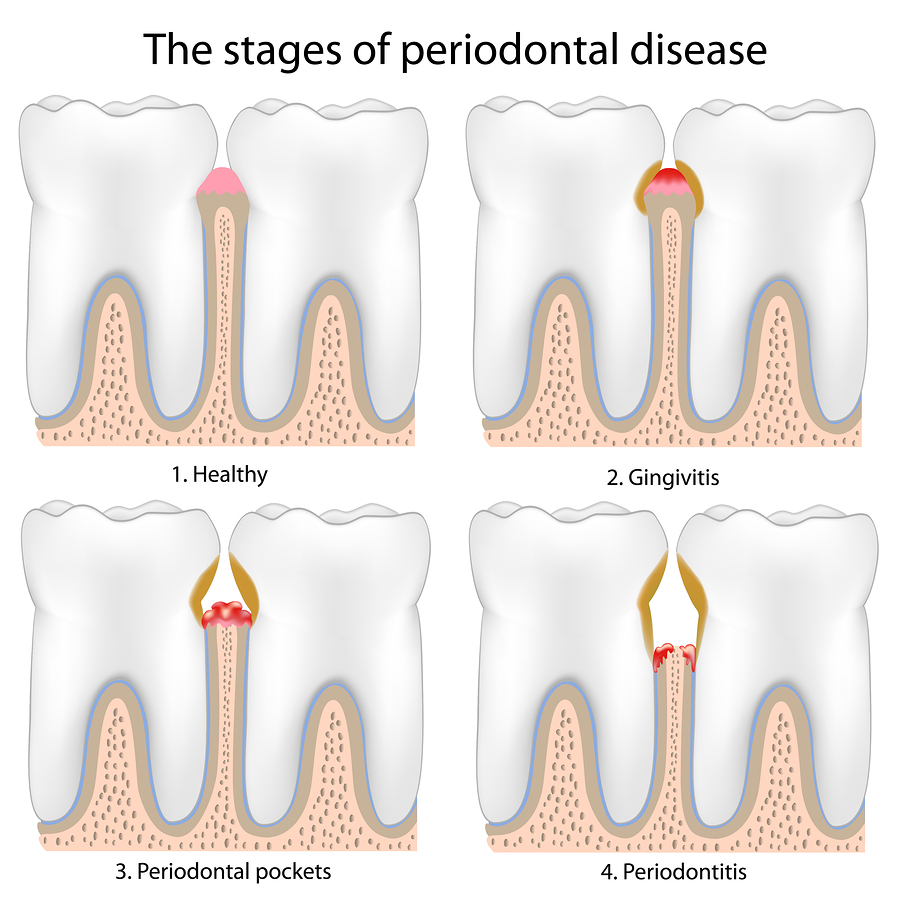Periodontal Disease (gum disease) involves the tissue of the gums becoming inflamed and infected. It is usually caused by a buildup of plaque on the teeth. Over time, this plaque hardens and turns into calculus.
Plaque and calculus forms if teeth are not kept spotlessly clean and regular visits to the dentist for cleaning are missed.
If left for too long, irreversible damage to the gums will occur, resulting in gums receding and ultimately in teeth becoming loose and falling out.

Signs of Gum Disease
Causes
Treatment of Gum Disease
Records are taken to determine if the gum disease is in early or advanced stages. Treatment includes:
- Removal of plaque and calculus – this is done in two stages, depending on how advanced the gum disease is:
- Scaling: this involves the tooth surface being cleaned from above the gum line as well as in the shallow pockets just beneath the gum line.
- Root Planing: this involves plaque and calculus being removed on tooth roots and in the deeper pockets beneath the gum line. This treatment may require a local anaethetic to numb the surrounding treatment area, and is performed when gum disease is more advanced and difficult to eliminate.


